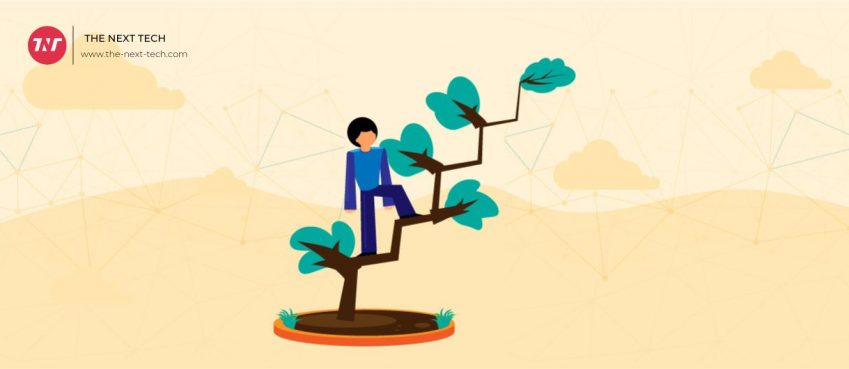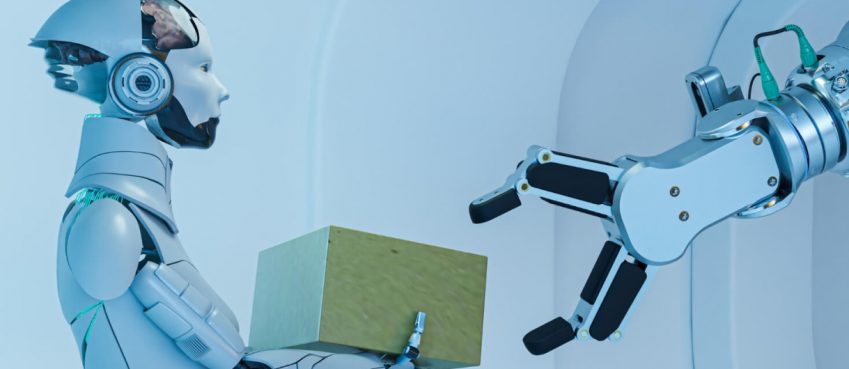
Transacting has changed dramatically due to the global pandemic. E-commerce, cloud computing and enhanced cybersecurity measures are all part of the global trend assessment for data analysis.
Businesses have always had to consider how to manage risk and keep costs low. Any company that wants to be competitive must have access to machine learning technology that can effectively analyze data.
Why trends are important for model creators?
The industry’s top data analysis trends for 2022 should give our creators an idea of where it is headed.
Creators can make their work more valuable by staying on top of data science trends and adapting their models to current standards. These data analysis trends can inspire you to create new models or update existing ones.
AI is the creator economy: Think Airbnb for AI artifacts
Similar to the trend in computer gaming where user-generated content (UGC), was monetized as a part of gaming platforms, so we expect similar monetization in data science. These models include simple ones like classification, regression, and clustering.
They are then repurposed and uploaded onto dedicated platforms. These models are then available to business users worldwide who wish to automate their everyday business processes and data.
These will quickly be followed by deep-model artifacts such as convents and GAN’s and autoencoders which are tuned to solve business problems. These models are intended to be used by commercial analysts and not teams of data scientists.
It is not unusual for data scientists to sell their expertise and experience through consulting gigs or by uploading models into code repositories.
These skills will be monetized through two-sided marketplaces in 2022, which allow a single model to access a global marketplace.
For AI, think Airbnb.
The future of environmental AI is now in your mind
While most research is focused on pushing the limits of complexity, it is clear that complex models and training can have a significant impact on the environment.
Data centers are predicted to account for 15% of global CO2 emissions in 2040. A 2019 paper entitled “Energy considerations For Deep Learning” found that the training of a natural language translator model produced CO2 levels equal to four-family cars. It is clear that the more training you receive, the more CO2 you release.
Organizations are looking for ways to reduce their carbon footprint, as they have a better understanding of the environmental impact.
While AI can be used to improve the efficiency of data centers, it is expected that there will be more interest in simple models for specific problems.
In reality, why would we need a 10-layer convolutional neural net when a simple Bayesian model can perform equally well and requires significantly less data, training, or compute power?
As environmental AI creators strive to build simple, cost-effective models that are usable and efficient, “Model Efficiency” will be a common term.
Hyper-parameterized models become the superyachts of big tech
The number of parameters in the largest models has increased from 94M parameters in 2018 to an astonishing 1.6 Trillion in 2021 in just three years. This is because Google, Facebook, and Microsoft push the limits of complexity.
These trillions of parameters can be language-based today, which allows data scientists to create models that understand language in detail.
This allows models to write articles, reports, and translations at a human level. They are able to write code, create recipes, and understand irony and sarcasm in context.
Vision models that are capable of recognizing images with minimal data will be able to deliver similar human-level performance in 2021 and beyond. You can show a toddler chocolate bar once and they will recognize it every time they see it.
These models are being used by creators to address specific needs. Dungeon. AI is a games developer who has created a series of fantasy games that are based on the 1970’s Dungeons and Dragons craze.
These realistic worlds were created using the GPT-3 175 billion parameter model. As models are used to understand legal text, write copy campaigns or categorize images and video into certain groups, we expect to see more of these activities from creators.
Top 10 Key AI and Data Analytics Trends
1. A digitally enhanced workforce of co-workers
Businesses around the globe are increasingly adopting cognitive technologies and machine-learning models. The days of ineffective admin and assigning tedious tasks to employees are rapidly disappearing.
Businesses are now opting to use an augmented workforce model, which sees humans and robotics working together. This technological breakthrough makes it easier for work to be scaled and prioritized, allowing humans to concentrate on the customer first.
While creating an augmented workforce is definitely something creators should keep track of, it is difficult to deploy the right AI and deal with the teething issues that come along with automation.
Moreover, workers are reluctant to join the automation bandwagon when they see statistics that predict that robots will replace one-third of all jobs by 2025.
While these concerns may be valid to a certain extent, there is a well-founded belief machine learning and automation will only improve the lives of employees by allowing them to take crucial decisions faster and more confidently.
An augmented workforce, despite its potential downsides, allows individuals to spend more time on customer care and quality assurance while simultaneously solving complex business issues as they arise.
This is an important trend in AI for data analysts who want to become part of the future of AI. There are many companies that are keen to adopt Robotic Process Automation (RPA), Machine Learning, and Cognitive Augmentation as part of their future models.
Also read: 9 Best Cybersecurity Companies in the World
2. Increased Cybersecurity
Since most businesses were forced to invest in increased online presence due to the pandemics, cybersecurity is one of the top data analysis trends going into 2021.
One cyber-attack can cause a company to go out of business. But how can companies avoid being entangled in a costly and time-consuming process that could lead to a complete failure? This burning question can be answered by excellent modeling and a dedication to understanding risk.
AI’s ability analyzes data quickly and accurately makes it possible to increase risk modeling and threat perception.
Machine learning models are able to process data quickly and provide insights that help keep threats under control. IBM’s analysis of AI in cybersecurity shows that this technology can gather insights about everything, from malicious files to unfavorable addresses.
This allows businesses to respond to security threats up to 60 percent faster. Businesses should not overlook investing in cybersecurity modeling, as the average cost savings from containing a breach amounts to $1.12 million.
Businesses can protect their bottom line by using this data analysis trend to keep their networks secure.
Also read: UpTrends.ai - Is It Shut Down? Rumors, Use Cases & FAQs
3. Low-code and no-code AI
Because there are so few data scientists on the global scene, it is important that non-experts can create useful applications using predefined components. This makes low-code or no-code AI one the most democratic trends in the industry.
This approach to AI is essentially very simple and requires no programming. It allows anyone to “tailor applications according to their needs using simple building blocks.”
Recent trends show that the job market for data scientists and engineers is extremely favorable.
LinkedIn’s new job report claims that around 150,000,000 global tech jobs will be created within the next five years. This is not news, considering that AI is a key factor in businesses’ ability to stay relevant.
The current environment is not able to meet the demand for AI-related services. Furthermore, more than 60% of AI’s best talent is being nabbed in the finance and technology sectors. This leaves few opportunities for employees to be available in other industries.
Creating low-code and non-code AI solutions that allow businesses to compete with data specialists is key to keeping the industry open and competitive.
Also read: 10 Top Android Apps For Personal Finances
4. The Rise of the Cloud
Cloud computing has been a key trend in data analysis since the pandemic. Businesses around the globe have quickly adopted the cloud to share and manage digital services, as they now have more data than ever before.
Machine learning platforms increase data bandwidth requirements, but the rise in the cloud makes it possible for companies to do work faster and with greater visibility.
Companies that do not take advantage of cloud services will be left behind, with 94% of companies already using them and the public cloud infrastructure expected to grow by 35% by 2021.
The cloud is a data security tool that can protect businesses from cyber-attacks and increase scalability. It’s one of the most important data analysis trends creators should be watching out for in the next few years
Also read: Top 9 WordPress Lead Generation Plugins in 2021
5. Small Data and Scalable AI
The ability to build scalable AI from large datasets has never been more crucial as the world becomes more connected.
While big data is essential for building effective AI models, small data can add value to customer analysis. While big data is still valuable, it’s nearly impossible to identify meaningful trends in large datasets.
Small data, as you might guess from its name contains a limited number of data types. They contain enough information to measure patterns, but not too much to overwhelm companies.
Marketers can use small data to gain insights from specific cases and then translate these findings into higher sales by personalization.
6. Improved Data Provenance
Boris Glavic defines data provenance as “information about data’s origin and creation process.” Data provenance is one trend in data science that helps to keep data reliable.
Businesses must be able to trust the data they use to market and advertise to remain profitable. Although data can be valuable, it is only useful if it is properly analyzed.
Poor data management and forecasting errors can have a devastating impact on businesses. However, improvements in machine learning models have made this a less common problem.
These models are now able to use targeted algorithms to determine which data sets should and should not be used. Data analysts will find it easier to identify relevant data by tracking intelligent features and keeping files current.
Also read: How to choose The Perfect Domain Name
7. Migration to Python and Tools
Python, a high-level programming language with a simple syntax and language, is revolutionizing the tech industry by providing a more user-friendly way to code.
While R will not disappear from data science any time soon, Python can be used by global businesses because it places a high value on logical code and understandability. Python, unlike R, is primarily used for statistical computing.
However, it can be easily deployed for machine learning because it analyzes and collects data at a deeper level than R.
The use of Python in scalable production environments can give data analysts an edge in the industry. This trend in data science should not be overlooked by budding creators.
8. Deep Learning and Automation
Deep learning is closely related to machine learning, but its algorithms are inspired from the neural pathways of the human brain. This technology is beneficial for businesses as it allows them to make accurate predictions and create useful models that are easy to understand.
Deep learning may not be appropriate for all industries, but the neural networks in this subfield allow for automation and high levels of analysis without any human intervention.
Deep learning and automation are key trends in AI, transforming high-quality data into top-line growth.
Also read: Top 10 Job Search Websites of 2024
9. Real-time data
One of the most interesting data analysis trends in recent years is being able to evaluate data in real-time. Sentiment analysis, real-time automated testing, and other data advances have been a growing trend in 2021.
Companies have used these data advances to evaluate consumer behavior as it occurs. Real-time analytics makes businesses more proactive by allowing for adjustments and changes as soon as problems arise.
Gartner research and advisory firm estimate that more than half of all new business systems will utilize real-time data by 2022 to improve decision-making. This will improve customer experience and increase profit margins for businesses.
Real-time data is also one of the most important data analysis trends. It eliminates the cost associated with traditional, on-premises reporting.
10. Moving beyond DataOps to XOps
Manual processing is no longer an option with so many data at our disposal in modern times.
DataOps can be efficient in gathering and assessing data. However, XOps will become a major trend in data analytics for next year. Gartner supports this assertion by stating that XOps is an efficient way to combine different data processes to create a cutting-edge approach in data science.
DataOps may be a term you are familiar with, but if this is a new term to you, we will explain it.
Salt Project’s data management experts say that XOps is a “catch all, umbrella term” to describe the generalized operations and responsibilities of all IT disciplines.
This encompasses DataOps and MLOps as well as ModelOps and AIOps. It provides a multi-pronged approach to boost efficiency and automation and reduce development cycles in many industries.
These programs can be combined to allow businesses to take advantage of the most recent IT software, allowing them to streamline data investigation, save time, energy, money, and reduce costs.
Also read: Top 10 Best Artificial Intelligence Software
What are the key trends in data analysis for the future?
Data science trends for 2021 look amazing and show that businesses are more valuable than ever with accurate and easily digestible data.
Data analysis trends will not be static, however, because the volume of data available to businesses keeps growing, so data analysis trends will never stop evolving. It is therefore difficult to find effective data processing methods that work across all industries.
Top 10 News
-
01
10 Exciting iPhone 16 Features You Can Try Right Now
Tuesday November 19, 2024
-
02
10 Best Anatomy Apps For Physiologist Beginners
Tuesday November 12, 2024
-
03
Top 10 Websites And Apps Like Thumbtack
Tuesday November 5, 2024
-
04
Top 10 Sites Like Omegle That Offer Random Video Chat
Monday October 21, 2024
-
05
Entrepreneurial Ideas To Make 5K In A Month (10 Realistic Wa...
Monday October 7, 2024
-
06
[10 Best] Cash Advance Apps Like Moneylion And Dave (No Cred...
Friday September 20, 2024
-
07
Top 10 Richest Person In The World
Tuesday August 27, 2024
-
08
Top 10 Unicorn Startups In The World (2024-25)
Monday August 26, 2024
-
09
Top 10 IT Companies In The World By Market Cap
Thursday August 22, 2024
-
10
[10 New] Best OnionPlay Alternatives To Stream TV Shows And ...
Tuesday June 11, 2024







